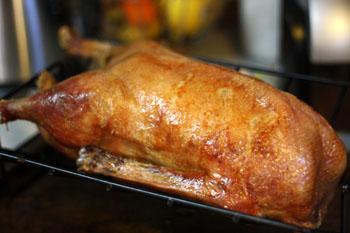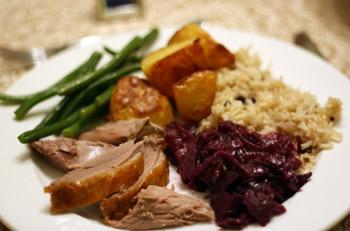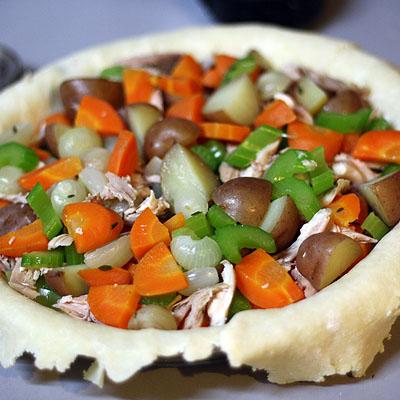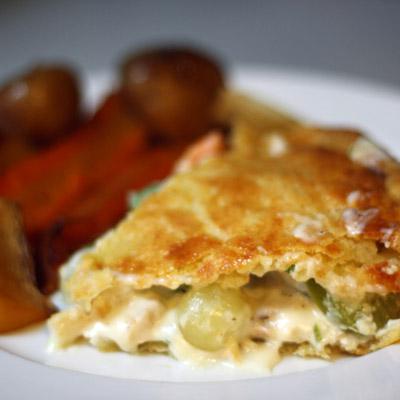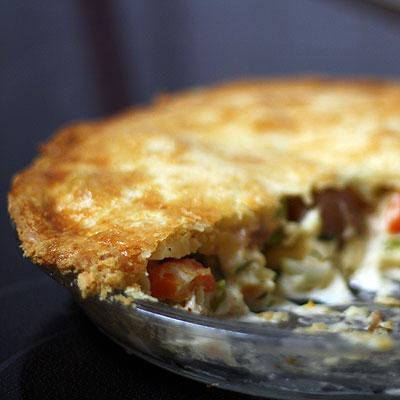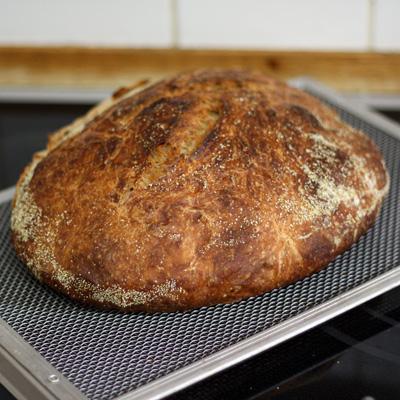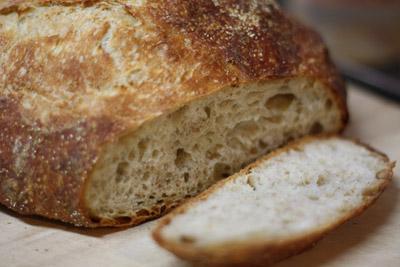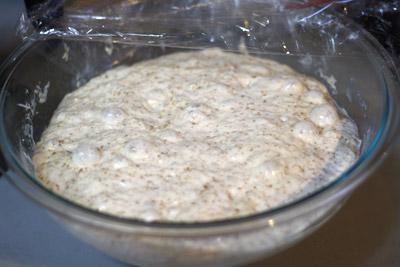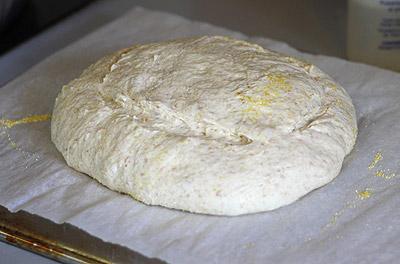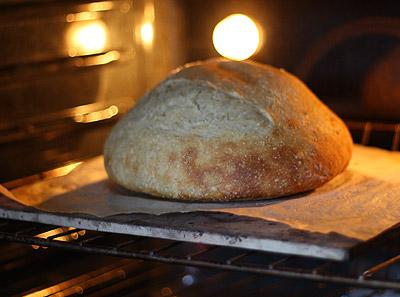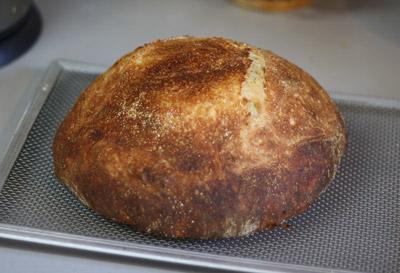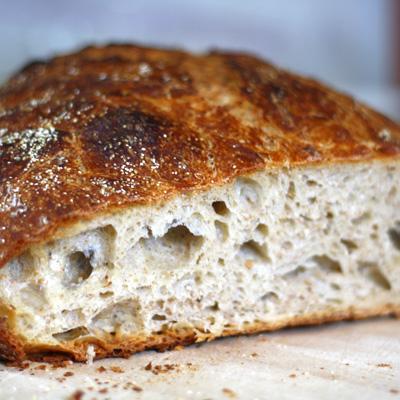
agray
participating member-
Posts
54 -
Joined
-
Last visited
Content Type
Profiles
Forums
Store
Help Articles
Everything posted by agray
-
I cooked a goose for Christmas dinner and it was excellent, but I'm a little unsure if I rendered the internal fat correctly and would love some feedback. I gathered a nice jar full of fat rendering out of the bird as it cooked - this was slightly golden when warm, quite clear and with a pleasant, very mild aroma. There were also 'pods' of fat in and around the cavity of the bird when we first got it. I removed these and rendered them separately. This was my first time attempting to render fat, and following some advice online I placed the fat in a pot with about 3/4 cup of water and simmered it until it appeared that the water had all evaporated. The bubbles changed and there was a sizzling sort of sound after 45 minutes or so, so that's when I stopped. I removed the pieces of skin (I think it was skin), one of which was fairly large and strained it through cheesecloth. The fat was much less golden in colour, a bit cloudy and had a not terribly pleasant smell that's hard to describe - a bit dark and funky. I wonder if that's due to the skin, etc. which was rendered with it? Or did I not render it long enough? Here's a picture of the two jars of fat before they cooled (they've both solidified in the fridge and are fairly white now). Left is the pot-rendered one.
-
Well, we did it. Thanks for all the suggestions. We bought a lovely 10 lb local goose and roasted it for dinner yesterday. I followed the Cook's Illustrated suggestions for prep and roasting and it turned out great. I gave it a quick dip in boiling water and then left it in the fridge for 2 days, uncovered, to dry out and tighten the skin. I also pricked the skin all over with a skewer to allow fat drainage. I cooked it at 325 for about 3 hours (flipping it over half-way through) and draining the fat from the roasting pan several times during the process. Then I took it out, turned the oven up to 400 and popped it back in to crisp up the skin for 15 minutes. As it rested I used some of the goose fat to roast some Yukon Gold potatoes (450 degrees for about 40 min). We served it with the potatoes, braised red cabbage, a rice pilaf and some simple green beans with butter and sea salt. Everyone loved the goose (and the potatoes too). And I have a lovely jar of goose fat left over. It was the most expensive poultry we've had for Christmas ($66 for the bird), so I don't think we'll do this every year, but it made for a memorable feast indeed.
-
Just roasted spuds for today's Christmas dinner and I also took some pointers from this thread. I peeled several pounds of Yukon Golds, parboiled them and bashed them around a bit when they were done, then tossed them with about 1/2 cup of goose fat (we roasted a goose for dinner - very nice). Roasted at 450 degrees for about 40 minutes and they were excellent. And I have a nice big jar of goose fat left over. Yum!
-
We just found a friend of a friend who's an organic farmer and was slaughtering four pigs last weekend, so we ordered a side - our first time doing so. I'm quite excited. We'll get the butchered meat after Christmas. Hopefully this will become a new tradition, getting it straight from the farmer, either at the farm or in the summer, at the farmer's market.
-
That sounds like an excellent goal. Any cakes in particular? 'Rose's Heavenly Cakes' by Rose Levy Beranbaum is sitting under the tree with my name on it, so I'll definitely be plunging into that one after the holidays. Generally just planning to expand my repertoire in the cake department. There are 6 family birthdays in six weeks starting in early February so I'll get lots of practice.
-
I will eat, as much as possible, local meat. Less quantity, more quality. I will use dried beans instead of canned. Eat less produce out of season. I will learn to make cheese. I will teach anyone I know who's interested all that I can about what I learn. I will read for pleasure as well as for work. Boy, it sounds like such a manifesto written this way... I will also make lots of cakes.
-
Thanks! I think the photo helps make it look good, though it was a very good crust. I didn't use the recipe from the book - Keller's recipe is not unusual though: flour, salt, butter, ice water. I'm still learning pastry, and I decided to use Rose Levy Beranbaum's Flaky Pie Crust recipe from 'The Pie and Pastry Bible'. This recipe is not dissimilar, but Rose has a bit of the Cook's Illustrated in her - her technique is incredibly specific and different than most (including Keller's). Also she uses exact weights for everything. Same ingredients, flour, butter, salt and ice water. But she also adds a tiny bit of baking powder (1/4 tsp) and 1 tablespoon cider vinegar. Both the vinegar and the teaspoon help counteract shrinking; the baking powder also helps aerate and tenderize the pastry. Then everything is chilled - 2/3 of the butter is frozen for 30 minutes, as are the dry ingredients. The rest of the butter is refrigerated. I used a food processor to initially process the flour/butter, then kneaded it in a gallon-sized ziploc bag. Then formed it into disks and rested them in the fridge for a couple of hours before rolling out. The whole thing with this technique is that everything is aimed (almost obsessively) at keeping the ingredients as cold as possible all the way through - the butter and flour remain in separate layers, with the butter coated by the flour but not integrated with it, thus maximizing flakiness.
-
Here's my shot at the Chicken Pot Pie Recipe from this book. I love chicken pot pie, and have made various variations on the theme. My previous favourite was Mark Bittman's from How to Cook Everything (the new, revised version). This one, save for a little seasoning, edges it out, and in fact is a different sort of beast altogether. As I'm finding with this book, and as others have also said, what Thomas Keller has done is taken some familiar dishes and raised them up a level using some of the techniques of a high-end restaurant, but yet not making them so complex as to be out of the range of a competent home cook. There are two things that raise this pie up - first, each vegetable is cooked separately. This step, fiddly though it may be, ensures that each vegetable is cooked properly and that the texture and flavour of each vegetable is preserved rather than blending into a sort of stew like in most pot pies. Secondly, the bechamel is reduced over 40 minutes or so to make a sauce that is rich but subtle. I used leftover chicken from his roast chicken recipe, which I'd done the night before. The first thing I did was make the pastry in the morning, as it has to sit in the refrigerator a while so it won't shrink. I'm still a bit of a pastry newbie, so I used Rose Levy's butter pastry recipe from The Pie and Pastry Bible since I know it works for me rather than Kellers, though his is very similar (as are most basic pie crusts). Later in the day I rolled out the pastry and put it back in the fridge. Then I cooked the vegetables, each one separately with 8 peppercorns each as well as bay leaves and thyme (the celery was blanched just briefly). Now, I understand that this method is important, but I'm sure you could make a few shortcuts here without damaging the final product - the carrots and potatoes, for example, could probably cook together... Anyway, first time, I followed it to the letter. Reducing the bechamel sauce was time-consuming, but worth it. With Bittman's recipe the sauce is fairly liquid, so I use a ceramic baking dish and cover it with puff pastry. With this version, I was easily able to make a two-crust pie, and the pastry was not soggy at all. This is the pie before adding the sauce. The celery was lovely and bright from the brief blanching. This is the finished product served with some roasted vegetables left over from the roast chicken. It does take a while - dinner was a bit late as it was hard to coordinate the vegetable cooking and the sauce making in the time I'd allotted. Next time I'll cook the vegetables when I make the pastry and put them all in the fridge together. Oh, and I recommend baking it low in the oven (I baked it on a baking stone) to crisp the lower crust. It was really quite good. The only thing I'd change is the seasoning; I may have been a bit stingy with the salt and pepper, and I've also become quite fond of sage in my chicken pot pies, so I'll add that next time. I've given all of the recipes I've tried so far 4 stars on my own site: http://www.cookbooker.com/title/2266/ad-hoc-at-home I'm definitely going to try that Cauliflower soup soon too - it sounds excellent.
-
Ruth - what's the name of the iphone application? That sounds like something I could use. I'd like to convert all my recipes to weights eventually - that's what I love about British cookbooks; always measured to the gram... I had an unfortunate brining incident with Keller's Tenderloin recipe because of the whole cups of salt / weight issue. And I agree with OliverB - it's not a quick recipe cookbook, but it's definitely manageable by the home cook. I'm by no means an advanced cook, but I had no problems following his directions for the pork tenderloin and the chicken pot pie, and both results were appropriate for the level of detail (they were worth the work).
-
Montreal v. NY bagels in the New York Times
agray replied to a topic in Eastern Canada: Cooking & Baking
It just isn't even a fair comparison, is it? Montreal by a country mile - and even Montreal-style elsewhere if they do it right. Siegel's in Vancouver, for example, makes a pretty decent bagel, especially when they're hot out of the wood-burning oven. Mmmm... -
Okay, I've been doing some experimenting with doing this on a baking stone, and I'm back to report my results. First, I did a regular no-knead bread in a cast iron pot as a control. The recipe I used was the slightly revised version from Mark Bittman's How to Cook Everything. I think I may have made it a little less wet than some though, as he didn't give weights, just cup sizes (curses!). So for 4 cups, I used 20 oz of flour (25% whole wheat) to 16 oz of water with just under 1/2 tsp of yeast and 2 tsp of salt. I gave it 8 hours but it looked to be rising a bit fast for me, so I put it in the fridge overnight. Next morning I gave it a couple of hours to warm up then put it on the counter for another couple of hours before baking. I left the lid on for the first 30 minutes then gave it another 15 or so. It came out beautifully, with a browned, crispy crust, and a great crumb. Then today I tried doing the same recipe but hearth baking with an aluminum pan as a makeshift couche. Again, it seemed to rise quick quickly and I was worried about overproofing. This picture is after 11 hours in a cool kitchen. I threw it in the fridge again for 2 1/2 hours, then brought it out to warm up. I shaped it into a rough ball and put it on parchment for 2 3/4 hours as it warmed. I misted the surface with water and slashed it. I put it on my baking stone (oven pre-heated with the stone at 500 degrees for 45 minutes) and popped the aluminum pan on it. It had a remarkable spring - after 20 minutes it had lifted the pan up off the stone, and I took it off. Less than 20 minutes later it was done. It rose so quickly it ended up a bit pointed at the top. It did seem a little blistered on the outside, and I think I am overproofing this recipe a little, but it did turn out to have a lovely crumb, though the crust is fairly soft. It also seemed a little bit less flavourful than my first batch, but this may be related to the longer fermentation of the first recipe (even if 10 hours of that was in the fridge). So, verdict - interesting indeed. I was impressed with the bountiful oven spring under the aluminum pan, but the crust was definitely not as crisp as with the cast-iron pot. And also, I am going to have to look at my ratios, as I think Bittman's recipe may be using 4oz cups while I'm using 5oz, which is a 20% difference, making my dough dryer than some. I wonder also about using less yeast. Looks like some more experiments are in order.
-
I have 50 at the moment, most recently Thomas Keller's Ad Hoc at home and before that Mark Bittman's How to Cook Everything (the new version). If my Christmas wish list is fulfilled, there will be a few more by the end of the year (mostly bread-related). I've started buying more now that I can write them off as a business expense since I started a cookbook related website; I just have to be careful - writing them off doesn't make them free...
-
Very interesting. It might be worth giving this a try along with something Peter Reinhart blogged about last week - using a roasting pan lid (or aluminum roasting pan) as an ad-hoc couche. With a wet dough like this the bread would generate its own steam and the pan would keep it in so you'd get enhanced oven spring and a good crust without messing about with steam trays and spraying. I don't have any dough on the go right now, but I'll give it a shot in a day or two and see what happens. Here's the link to Peter's post: http://peterreinhart.typepad.com/peter_reinhart/2009/11/new-steaming-technique-and-other-news.html (he's also updated this post with a link to a website where someone has a video of it in action - http://www.northwestsourdough.com/newsite/videos.html).
-
Excellent suggestions, all! That rellenong manok is very interesting looking indeed - I'd never seen it before. However, I'm leaning heavily towards the goose. I found out I can get fresh local goose, and looking at cooking instructions it seems pretty straightforward (there's a great thread here from 2002) for me. Other game birds are looking a little hard to find here. And goose fat intrigues me - one of my plans for the coming year is to explore fat a little more: render my own lard, roast potatoes in duck or goose fat, etc.
-
I'd be curious to see what happens with the parchment round. As for baking on a stone, I regularly make baguettes using Peter Reinhart's Pain a L'Ancienne recipe from the Bread Baker's Apprentice; it's a very similar dough - wet, no-knead, though it is fermented overnight in the fridge rather than at room temperature. When you're ready to bake, you take it out and let it warm up for 2-3 hours, but it doesn't have a second rise. Instead, you cut it roughly into 6-8" lengths, put it on parchment and then bake it on a stone with both water in a pan underneath and spraying the sides of the oven with a spray bottle. They're amazing, and they do spring up nicely into rustic baguette shapes. I've got a few photos here showing this: http://www.cookbooker.com/blog/2009/10/22/pain-alancienne-baguettes/ This is quite comparable to what you're talking about - I wonder, however, if this rather slack dough will spread out too much on a stone if it's in one large boule-type mass? Baguettes don't have to rise too much. Hmm, maybe I'll give it a shot and see...
-
I like the idea of Prasantrin's - putting a circle of parchment on the bottom of the pot, like you'd do baking a layer cake. Then you only have to worry about it sticking to the sides. I use parchment for pizza all the time and never have any issues with the rather wet dough I use releasing from the paper when it cooks. I just made a loaf of this today and it came out of the pot with no problems at all, but this is a new, enamelled pot, so we'll have to see what happens after a few years of stews etc...
-
Hmmm, all very interesting! Thanks for the thoughts so far. Roast goose has a sort of romantic allure to it (at least to people who've read lots of European Christmas stories in their youth). I've never actually had it, though. That said, I haven't had a good Coq a Vin for a while either, and if done right, it's awfully good... Thanks for that suggestion Katie. There are some interesting small farms around here on Vancouver Island, and I know I can get duck. There's also a good butcher in town I just called, who can get in fresh duck and goose from Victoria/Cowichan Valley, so I do have options. A nice ham is not a bad idea - maybe we'll do that for Easter. Right now, we do have fowl on the mind.
-
My wife is tired of turkey and has requested something different this Christmas, but still avian if possible (we did a whole salmon the last time we were tired of turkey but it didn't really feel seasonal). We've discussed duck and goose but have cooked neither before as whole creatures (reheating duck confit doesn't count...). I'm not an amateur in the kitchen, but let's say I'm still gathering my experience. What would be a good bird choice for someone like me to make for a holiday dinner? There will be 6 meat-eaters present.
-
Keller's ratio looks to be about 2.5 times higher than yours, Shalmanese - 5 oz per 8 cups water. And I used 50% more than this, getting close to 4 times your medium brine! No wonder it was salty. Live and learn... Oh, and the title of this thread should be TK pork tenderloin. I blame iPhone autocorrect...
-
Thanks for the quick and very helpful responses. I'm such a newbie - I didn't weigh the salt, as you suspected JAZ. I just checked now, and Keller does indeed note that a cup of Diamond Crystal is 5 oz. I weighed our Kosher salt (Windsor brand - I'm not sure how easy Diamond Crystal is to get in Canada) and a cup is 7.6 oz. So there you go. Thanks also for the suggestions, Velveeta - it was not treated with saline already, though it's very useful to keep that in mind. Keller's recipe does have some honey in it, though maybe not as much as other brines, and I did rinse it, though I'll be careful to be thorough next time. And Dave, thanks so much for the link. I'm still learning my way around here - I'd no idea the eGCI course was there; what a marvellous resource it is. Next time I'll put in 4-5 oz and aim for a 3-4 hour brining.
-
Just made the Pork Tenderloin recipe from Thomas Keller's 'Ad-hoc at Home' and I had a brining query. He uses a 1 cup kosher salt to 8 cups water ratio, plus all sorts of aromatics, and suggests a 4 hour brining time. I only had time for 2 1/2 hours and although my wife thought it was excellent, I found it a bit too salty for my taste. So, to reduce the saltiness, is it better to reduce the salt to water ratio and give it the standard length brining or keep the ratio the same and reduce the time? I presume there's some chemistry at work here otherwise you could have super short brining time with a higher ratio...
-
I'm going to be making some cornmeal-cranberry cookies for a cookie exchange (the first time I've done one, believe it or not), and I'm seriously thinking about doing the gingerbread house thing (I make gingerbread every year but this is the first year my kids are old enough to get into construction). My big Christmas production is my great-grandmother's Christmas pudding though. I do this every year - it's a classic 19th century Victorian pudding with suet and peel and carrot and apple and brandy etc. It boils for about 8 hours before we serve it. My Aunt recently sent me an alternate version, also from the same grandmother, which was the birthday dumpling; a bit lighter than the Christmas one. It has butter instead of suet, less fruit and no booze. Hmm... Oh, and I have vague fantasies about making chocolate truffles, which I've never tried before.
-
Well, yes, to a point. But I think he's talking in general about the idea of the cookbook; the way it is so full of promise, and this is why we often buy them. They're aspirational objects. We buy Thomas Keller's newest book in order to experience, for a while, the idea that with some practice we might cook like him. We read through cookbooks we may never even try out because the experience of reading them satisfies something in us. The reality is that for most home cooks, you're never going to make something that would be served at The French Laundry, but that you might put together a really good roast chicken for your friends. I thought that it was interesting that he compared Bittman's "How to Cook Everything" with a manual on how to play catch. Not that he slags the book (though he does gently mock it, while also calling it indispensable), but that he uses it to make a larger point. Many didn't have a Dad around to learn catch; many are not getting the lore of cooking passed down the generations. Of course this, as you say Moopheus, depends on your family. It's a pretty rambling article overall; quite entertaining in patches (I'll confess to not having completely finished it when I posted earlier). Frankly, I'm somewhere in the middle if in fact he is arguing that cooking passed on is superior to cooking learned from books. There are many of us who only have the books, after all.
-
I've just been reading Adam Gopnik's article on cookbooks. Very good stuff indeed. I like the image of him (I presume it's him) and his wife in bed; she reading a fashion magazine, he a cookbook. If I may quote: "Why they read these things mystifies even the readers. The closet and the cupboard are both about as full as they’re going to get, and though we can credit the fashion reader with at least wanting to know what is in fashion when she sees it, what can the recipe reader possibly be reading for? The shelf of cookbooks long ago overflowed, so that the sad relations and failed hopes (“Monet’s Table,” “A Drizzle of Honey: The Lives and Recipes of Spain’s Secret Jews”) now are stacked horizontally, high up." It's online at: http://www.newyorker.com/arts/critics/atlarge/2009/11/23/091123crat_atlarge_gopnik#ixzz0X3HX8OSZ
-
I'm a grazer. I'll buy a book, often on impulse (yesterday it was Thomas Keller's 'Ad Hoc At Home', which I saw at Costco for a good price, and had seen people chatting about here), then I'll flip through it looking to be enticed. Photographs are good - it can be a good hour's entertainment just paging through an attractive book and thinking about cooking the recipes. Like some of the others, I'll put a sticky note or two in places I want to come back to later. I may not cook from the book right away (I have a couple of books, like 'Hot Sour Salty Sweet' that I bought for looks alone and have yet to cook a single recipe from), but usually I'll try to give some of the recipes a shot in the weeks after buying them. Often it's ones that sound familiar or look like good bets to be something I'd like. If the ones I do are successful, it will spur me to try more adventurous recipes from the book and take some chances. I find that it's the books I buy for a specific purpose that I spend the most time with, rather than the impulse buys. When I decided I wanted to get serious about home baking I ordered Peter Reinhart's 'Bread Baker's Apprentice' and then methodically worked my way through a set of different recipes, doing them several times each until I felt I had a good grasp of them. Then I got his 'Whole Grain Breads Book' and did the same, and again with 'American Pie'. What I found handy was to set up a secondary bookshelf right in my kitchen, where I see it every day. I have 10 books there - all ones I want to use more (mostly new) and it's easy to pick one up and page through it, looking for ideas. The main bookshelf is in the next room, and has about 100 titles, books and magazines. It's a bit more effort to cook from those books, unless I'm going back to old favorites. My cookbooker website project will hopefully spur me to get more out of those ones though as I start to get access to individual recipe reviews.


